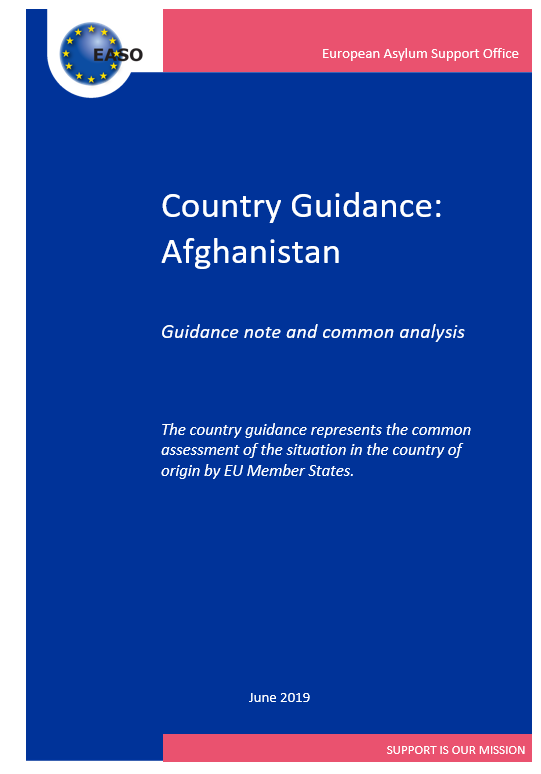 Publication date: June 2019
Publication date: June 2019
The ‘Country Guidance: Afghanistan’ represents EU Member States’ common assessment of the situation in Afghanistan as a country of origin of applicants for international protection. The latest update of the guidance note, accompanied by the common analysis, was endorsed by the EASO Management Board during their 32nd meeting in June 2019. The analysis and conclusions in this document are based on the most up-to-date EASO country of origin information reports, which were available at the time of its completion.
This document provides an in-depth analysis of the situation in Afghanistan, focusing on all key elements of qualification for international protection. It looks into the relevant actors of persecution or serious harm; the potential qualification for refugee status of different profiles of applicants from Afghanistan; and the applicability of subsidiary protection under Article 15 of the Qualification Directive. Furthermore, it assesses the ability and willingness of the authorities in the country of origin to provide protection in the meaning of the Qualification Directive; and analyses the availability of internal protection alternative within the country. In its final chapter, the guidance highlights some aspects relevant to the potential exclusion of those who may be found not to be ‘deserving’ of international protection.
The 'Country Guidance: Afghanistan' is now available as an e-book on this webpage.
You can also download the full ‘Country Guidance: Afghanistan’ in pdf format,
including the guidance note and the common analysis.
This document applies the common legislative framework regarding qualification for international protection in an in-depth analysis of the situation in Afghanistan. It aims to provide assistance to decision-makers and policy-makers in the EU and beyond, by addressing the topics of:
- actors of persecution and serious harm (Article 6 of the Qualification Directive);
- refugee status and analysis of the protection needs of specific profiles of applicants encountered in practice (Article 9 and 10 of the Qualification Directive);
- subsidiary protection, including the risk of death penalty or execution (Article 15(a) of the Qualification Directive); torture, inhuman or degrading treatment or punishment (Article 15(b) of the Qualification Directive); and serious and individual threat to a civilian’s life or person by reason of indiscriminate violence in situations of international or internal armed conflict (Article 15(c) of the Qualification Directive);
- actors of protection (Article 7 of the Qualification Directive);
- internal protection alternative (Article 8 of the Qualification Directive); and
- exclusion (Article 12 and Article 17 of the Qualification Directive).
Learn more about the 'Country Guidance: Afghanistan', its basis and scope and the methodology for its development, in the section Introduction.
